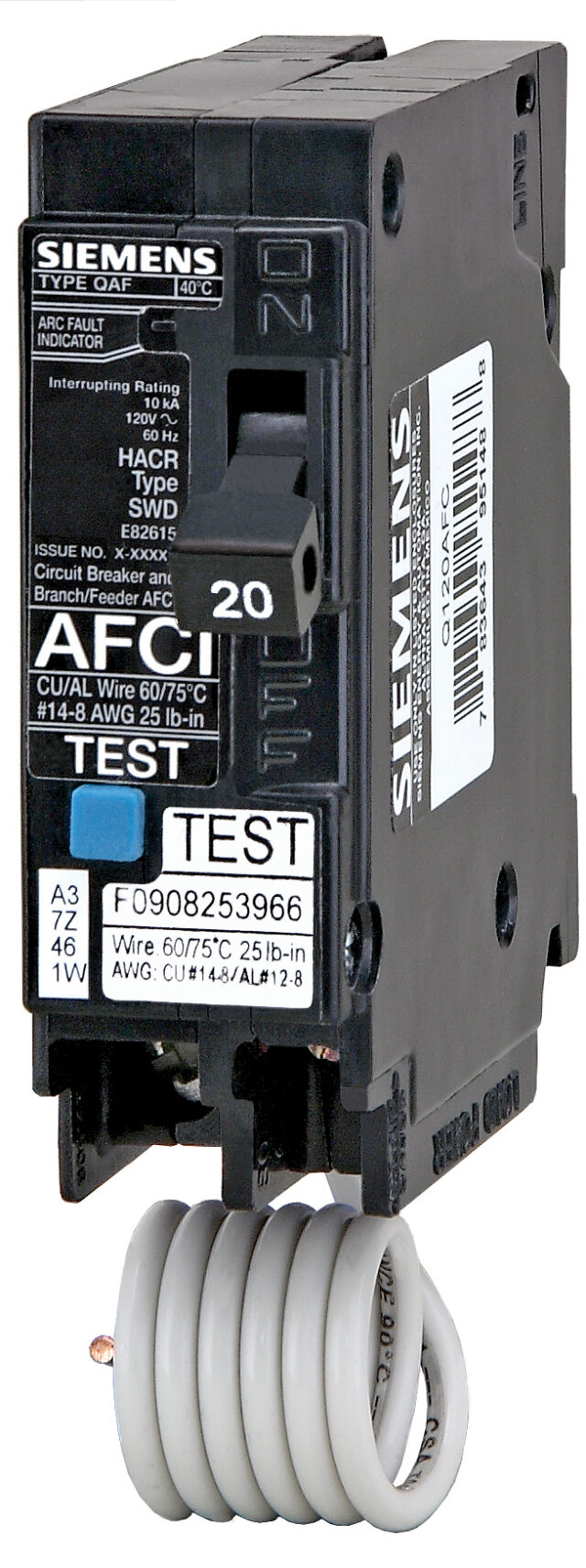
Electrical safety is on the increase once again, writes Gary Busbridge. This time we’re targeting arcing faults.
They say an electrician’s life is getting easier, that there’s a detector to sort out all of your problems.
Consider that an RCD detects earth leakage faults, smoke detectors work for fire detection, MCBs detect over-current situations and surge protectors (SPD) detect over-voltage.
What else could there be to make the art of detection even better?
Well, here it is folks – an arc fault detection device (or an AFDD if you’re into acronyms).
“Huh?” I can hear you all ask. Maybe if I use the American term and acronym it may help you? ‘Arc fault circuit interrupter’, or AFCI…
Still no good? Well, then let me explain.
An AFDD is a device that detects a wide range of electrical arcing faults in an installation’s wiring thereby reducing the risk of the wiring being a fire ignition source. For example, I’m sure all of you out there have seen or witnessed the devastating effects of a loose termination in a wall socket or circuit breaker. If you don’t tighten the cable and terminal joint with sufficient force the joint will be a source of heat leading to, in worst cases, an arcing or overheating situation, which in turn can be the cause of a serious fire.
In the same way, an arc can be created in a wiring system through damaged wiring, worn electrical insulation, wires or cords in contact with vibrating metal, stressed or overheated cords or wiring and damaged electrical appliances.
“Ahh,” I hear you say: “That is why we have MCB’s or over-current detectors!”
Unfortunately these do not detect these low level arcing currents that have the potential to initiate electrical fires. If we use America as the example, according to the US Fire Administration electrical fires spark an estimated 67,800 home fires on an annual basis. Further data has concluded that around 35% of these are from installation wiring and a further 17% are from cords and cord sets.
Let me throw out a few examples as to how that could occur: a nail or screw driven into a wall may cause the insulation on a cable to be fractured or broken; a flexible cord caught in a door jamb or furniture pushed hard up against a plug in a socket can stress the wiring or cords breaking insulation or the copper cable; even a cable clip staple has the potential to damage the insulation.
These types of faults can either be a series fault (a cable breaks and arcs as the current is drawn by the device) or a parallel fault (insulation breaks or fractures across both live conductors and arcing occurs across the conductors). These faults can occur down to 2.5A to 3A and can cause a small arc which, as we know, leads to some form of carbon build-up across the area of the arc. This build-up then enables the arc to occur and continue until sufficient heat is generated, the insulation breaks down and a fire is ignited within the cable.
If there is combustible material anywhere near the cable’s propagated flame, hey presto, we have the makings of a house fire.
Arc fault detection is accomplished by the use of advanced electronic technology to monitor the circuit for the presence of ‘normal’ and ‘dangerous’ arcing conditions.
In some equipment in the home, such as vacuum cleaners or heater fan motor, or when a light switch is turned off, the opening of the contacts naturally create an arc. This is considered to be a ‘normal’ arcing condition.
A dangerous arc, as mentioned earlier, occurs for many reasons.
An AFDD analyses arcing events and determines if it is hazardous. There are hundreds of possible operating conditions that AFDD manufacturers test for and the results are used to program their devices to constantly monitor for normal and dangerous arcing conditions.
AFDDs, which protect all cabling from arcing faults, have become the next level in protection within an installation alongside an MCB (which protects the cabling from over-current), RCD (which protects the person from earth leakage issues), and SPD (which protects cabling and devices against over-voltage). This is a very comprehensive package of protection you must agree.
In America, AFCIs are now mandatory to be fitted into all new homes. The initial requirement was introduced in the National Electrical Code in 1999 and applied to circuits that fed into dwelling bedrooms. At that time the requirement was also altered to cover the bedrooms in mobile homes and transportable homes.
From 2008 this again was altered to encompass dwelling units (family rooms, dining rooms, living rooms, parlours, libraries, dens, bedrooms, sunrooms, recreation rooms, closets, hallways, or similar rooms or areas). Basically, anywhere that is a living area within a home or mobile home is required to be protected by an AFDD.
Now, thanks to pressure from insurance companies, this technology can be expected to spread across the globe and that is exactly what is currently happening in Europe.
The International Electrotechnical Commission (IEC) has begun formulation of 240V standards for AFDDs. For some reason they opted for the name ‘detection device’ rather than ‘circuit interrupter’, but I can understand their reasoning as it fits better into our scheme of existing detection devices.
Currently a draft (future IEC 62606) has been published as a Committee Document and is due to be voted on by the end of September 2011. The document is specific to 240V AFDDs and contains all the necessary requirements and tests to verify an AFDD.
This new IEC standard is sure to be used within Europe to design and manufacture the type of switchboard-mounted (DIN-rail mount) products that we, in Australia, are very accustomed. So don’t be surprised to see them in marketing literature from switchgear manufacturers or promoted by insurance companies in the near future.
At least you now have a ‘heads up’ and can be ahead of the game. In fact, by reading this article you have detected the future of arc fault detection in Australia. Well done!





